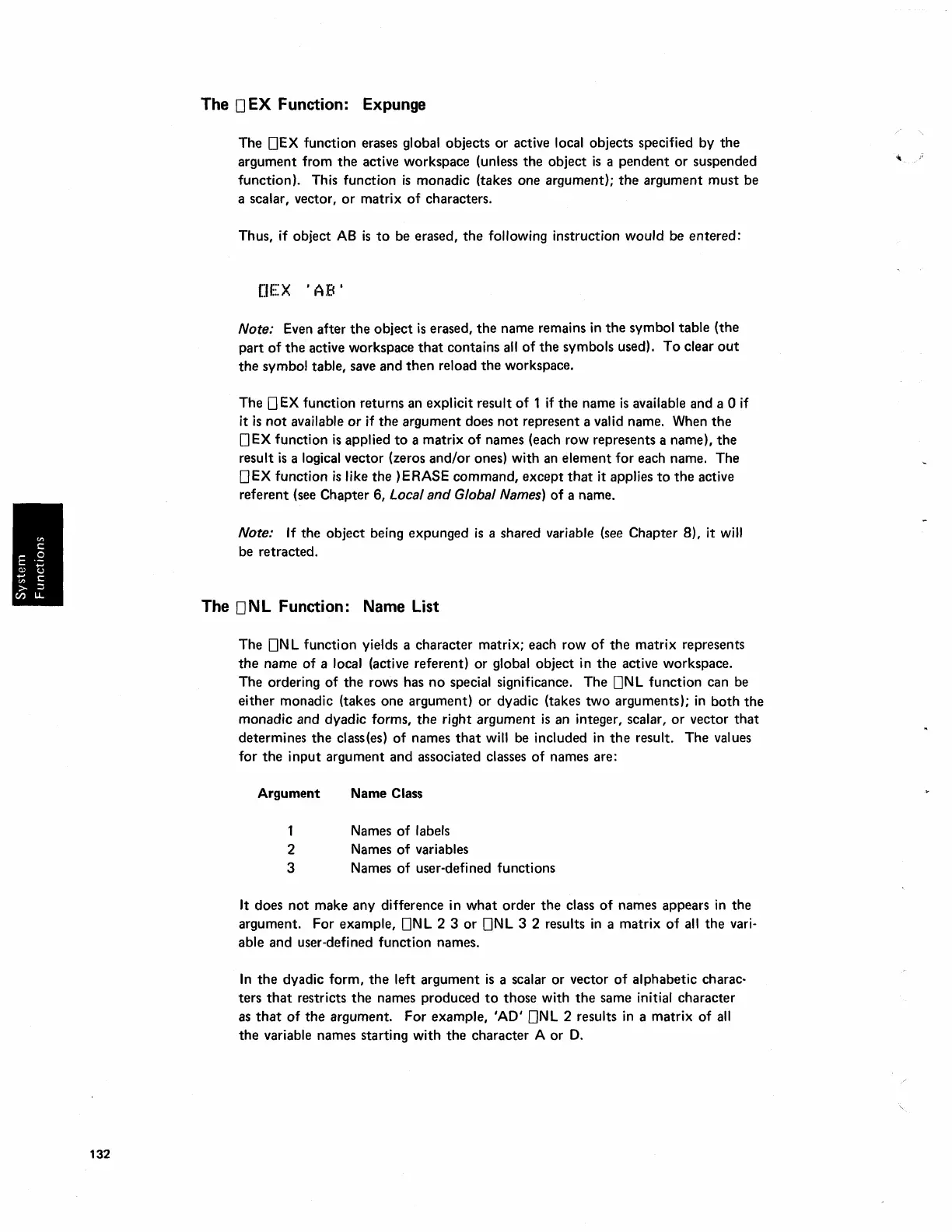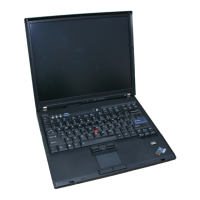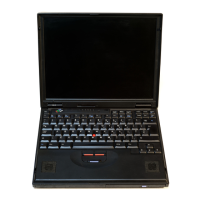132
The 0 EX Function: Expunge
The
OEX function erases global objects
or
active local objects specified by
the
argument
from
the
active workspace (unless
the
object
is
a
pendent
or
suspended
function). This
function
is
monadic
(takes
one
argument);
the
argument
must
be
a scalar, vector,
or
matrix
of
characters.
Thus, if object
AB
is
to
be erased,
the
following instruction
would
be
entered:
[lEX
'I~B'
Note: Even after
the
object
is
erased,
the
name remains in
the
symbol
table
(the
part
of
the
active workspace
that
contains
all
of
the
symbols used).
To
clear
out
the
symbol table, save
and
then
reload
the
workspace.
The
0
EX
function returns an explicit result
of
1
if
the
name
is
available and a 0 if
it
is
not
available
or
if
the
argument
does
not
represent a valid name. When
the
OEX
function
is
applied
to
a matrix
of
names (each row represents a name),
the
result
is
a logical vector (zeros
and/or
ones) with an
element
for each name.
The
OEX
function
is
like
the
)ERASE
command,
except
that
it applies
to
the
active
referent
(see Chapter 6, Local
and
Global Names)
of
a name.
Note: If
the
object
being
expunged
is
a shared variable (see Chapter
8),
it will
be retracted.
The ONL Function:
Name
List
The
ON L
function
yields a character matrix; each row
of
the
matrix
represents
the
name of a local (active referent)
or
global
object
in
the
active workspace.
The
ordering
of
the
rows has
no
special significance.
The
ONL
function
can be
either
monadic (takes one argument)
or
dyadic (takes
two
arguments);
in
both
the
monadic
and dyadic forms,
the
right
argument
is
an integer, scalar,
or
vector
that
determines
the
class(es)
of
names
that
will be included
in
the
result.
The
values
for
the
input
argument
and
associated classes
of
names are:
Argument
1
2
3
Name Class
Names
of
labels
Names
of
variables
Names
of
user-defined functions
It
does
not
make
any
difference in
what
order
the
class
of
names appears
in
the
argument. For example, ONL 2 3
or
ONL 3 2 results
in
a matrix
of
all
the
vari-
able
and
user-defined
function
names.
In
the
dyadic
form,
the
left
argument
is
a scalar or vector
of
alphabetic charac-
ters
that
restricts
the
names
produced
to
those
with
the
same initial character
as
that
of
the
argument.
For
example,
'AD'
ONL 2 results
in
a
matrix
of
all
the
variable names starting
with
the
character
A
or
D.
